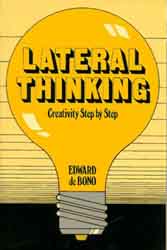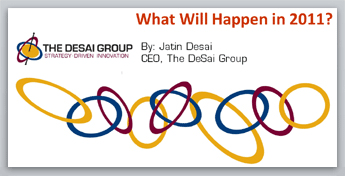Browse by Tag
- "Real" Innovation (2)
- Alignment (6)
- Business Innovation (9)
- Business Plan (2)
- Business Plans (1)
- Creativity (24)
- Critical Success Factors (4)
- Entrepreneurship (9)
- Global Competiveness (4)
- Human Side (11)
- India (1)
- Innovation (4)
- Innovation Consulting (18)
- Innovation Killers (3)
- Innovation Management (18)
- Innovation Tools (17)
- Innovation Training (24)
- Innovations (7)
- Inventions (16)
- IT Innovation (1)
- Leaders (5)
- Leadership (20)
- Leadership Development (13)
- Organizational Leadership (2)
- Organizational Strategy (20)
- Personal Values (6)
- Prediction (5)
- Strategic Innovation (38)
- strategic planning process (4)
- Strategy (3)
- Training (1)
- Vision (5)
- Weekly Dose (8)
Posts by Month
- 2014
- 2013
- 2012
- 2011
- 2010
- 2009
- 2008
- 2006
Beyond Gravity #2
Here is another installment of what has been traveling through my desk. In the last Beyond Gravity #1 we looked at innovation examples related to design, a book, a Harvard Conference I went to, and much more. I hope you enjoy some of the mind-benders listed below. Feel free to send me your comments and enjoy!
- Technology: 3D Models created by Cell Phones (Microsoft): Click here

- Does God Exist?: Earth is smaller than an atom…the Human mind is insignificant…or is it? NASA’s March 7th photo of the Sun is amazing. You may want to put it as a favorite site! Click here

- Big Thinking: If you understand Darwin’s Forgotten Theories you can discover solutions to just about every challenge in your personal and professional life… Click here
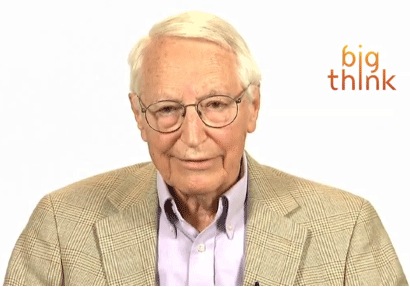
- How to Fail Fast: Want to solve impossible problems faster? Learn to re-think your original problem itself.
 In most cases, the problem that seems impossible is not the problem you need to solve. Click here
In most cases, the problem that seems impossible is not the problem you need to solve. Click here
- Green Innovation: PepsiCo unveils 100% Plant based bottle: Click here
- Product: Home in a Car by Swiss Room Box… Click here
- Steelcase's Brilliant Workstation For Staging Virtual Meetings [Video] Click here
"Beyond Gravity" (#1)
Following is a list of videos, blog posts and articles on going beyond “personal and organizational gravity”. Gravity is an invisible force holding us back when it comes to growth and innovation. We must go beyond that. Following are some items that I have enjoyed in the last couple of weeks and the latest posts at www.desai.com. I hope you enjoy them.
1) Design: Very nice example of extraordinary furniture for small space.
2) Book: “Lateral Thinking” by Edward DeBono. Very nice and very popular. Worth having a copy if you are serious about facilitating workshops on creativity and team synergy.
3) Conference: Harvard Conference on India: - some great speakers, nice content, and one of our client company’s Chairman attending (Murugappa Group, Chennai, India).
4) Hong-Kong: 330 Square feet Flat/Apartment transforms into 24 different eco-friendly rooms.
5) Free McKinsey Report: The urban world is shifting. Today only 600 urban centers generate about 60 percent of global GDP. While 600 cities will continue to account for the same share of global GDP in 2025, this group of 600 will have a very different membership. Over the next 15 years, the center of gravity of the urban world will move south and, even more decisively, east.
6) Rural India: Rural communities create more innovations then you think.
7) Personal Branding: Dan Schawbel is pretty good at marketing himself; as a brand. Do you want to become ‘the’ brand for your chosen area of expertise? Why not?. Here is what Dan has done…check his work at DanSchawbel.com and take a look at his community on Personal Branding Blog.
Innovation Q&A with Rob Berman
My friend Rob Berman had lots of questions about Innovation. He discussed these questions with me and had put together this discussion in his blog.
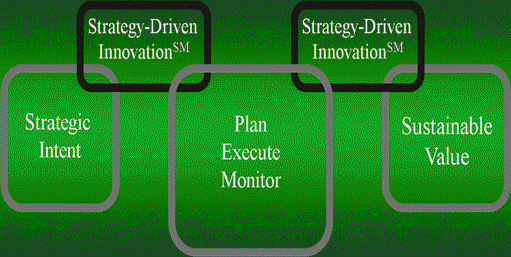
For all questions and answers of this discussion please visit Rob Berman's blog.
-Jatin Desai
How leaders in your organization are helping employee become Innovative?
To stay ahead of the competition, a company needs to constantly innovate, especially in the times when new highways and skyscrapers can change a city's look overnight and new flavors in your coffee at your favorite cafe change as fast as it takes to brew a cupful.
But, the question is what does it take to innovate? It takes out-of-the-box thinking in terms of smart strategies, the ability to conceptualize something that is unseen by others and to have the courage to risk everything and bring it out first to lead the industry.
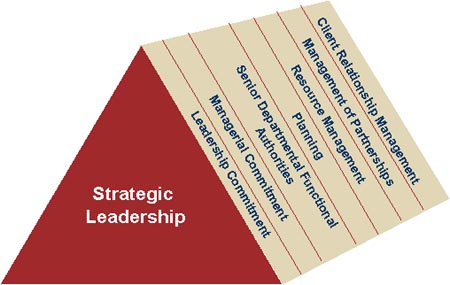
However, in an organization, employees with creative powers and important project managerial roles often lack the organizational support to go with something innovative and brilliant in the fear of being snubbed by the boss or the leader. More often than not, leaders start assuming totalitarian powers over the company's workforce and direct them to work according to certain set parameters and guidelines, such that each and every project starts becoming clone of the other. In our experience, it is this clone-building practice at the level of leadership that causes grave impediments towards healthy and vibrant organizational environment.
In other words, lack of committed leadership support for innovation is the single largest barrier to employees bringing out their very best and being innovative – everyday.
To check whether the leaders of your company are amply motivating the younger and ambitious work force or not, start by seeing whether they are too much into appeasing clients. If they are themselves in the constant fear of rejection by clients and have restricted the use of their brainstorming and creative faculties, chances are they will lead in a negative manner and discourage the teams working under them from carrying out any innovative plan, idea or strategy.
Another great sign to look for is which of the ‘Three-S Mindset’ does your leadership predominantly use to run the business?
- ‘Start-Up’ attitude: meaning do they love to experiment a lot, fail, learn, and keep experimenting until something new arises? They are customer driven to find solutions to the unmet needs of the market or enhance current portfolio of products to make them better – constantly.
- Scale attitude: here, the leaders have the courage to invest and grow the business fast. Leaders have demonstrated the required balance between growth and optimization, but are driven by speed to market.
- Status-Quo: here the leaders are wired for keeping things as is and not rocking the boat too much. Here leaders have very low risk-tolerance, proactive about cutting costs, optimize everything, and do not show commitment to long-term investments?
In our experience, leaders cannot afford to only use one mindset; they must use all the three above really well. This means organize the company strategies, structure, teams, and systems to leverage all three without causing disruption or disengagement of the workforce.
Every leadership development program must address development of the ‘Three-S’ mindsets. The DeSai Groups’ leadership programs are based on the principles of rationality and address the inner conflicts of leaders that restrict them from ‘thinking out the box’ and the invisible biases that limit their full attention to innovation and dynamism. Our leadership development programs are based on achieving two broad goals -- the motivation to motivate by engaging leaders of your company in self-awareness programs so that they come face to face with their own weaknesses and mental block against innovation and to show them how your company is under-performing due to these personal limitations.
Thus, The DeSai Group encourage and trains leaders to become sensitive to the talents and skills of the work force while leveraging the experience and expertise of the best talent pools within. Leaders are taught to promote diversity, challenge status-quos, practice three-dimensional thinking, and identify emerging patterns for themselves and their subordinates that will propel innovation in the company. Ultimately, this will allow your company to benefit from their power to innovate.
To build a climate and culture of innovation is a long-term process, which must happen at all levels: leadership, middle-management, work-teams, and at the individual level.
Do not waste your company’s hard earned money on any innovation training workshops until you have hard evidences that your leaders at the top are truly ready to walk-the-talk about innovation process themselves. Only then, you can expect teams and individuals to embrace innovation as way of life in your company.
How Innovative is your Organization?
You must be having certain parameters or yardsticks to judge the performance of your organization and exactly calculate the return on investment (ROI) vis-à-vis the planning, the performance and the potential. Despite all the available mechanisms of analysis, most leaders fail to understand the immeasurable gap between speculations and reality. The root cause of this immeasurable gap can certainly be tracked down to a few intangible factors. Primary among them is the capacity to innovate for a particular brand, organization or a corporate entity.
Innovation Obstacles
The major problem faced by an organization is the absence of a clear directive or formula to innovate. The work force, which is a major decider of innovation, largely works as a cog in the machine rather than a radical unit intelligent enough to innovate as hierarchical processes are better preferred by a linear human resource.
Another area which makes innovation a difficult process to be imbibed by your workforce is lack of liberty to express in a highly structured system. Whenever there is lack of liberty at an individual level, an organization fails to innovate on the whole. More structured-driven the culture, harder it is to embrace innovation; which by its nature, is somewhat unstructured.
Organizational culture is a result of inherited and tolerated past behaviors of the staff; especially the leaders at the top. Organization suffers from lack of innovation due to contemporary business practices and the nearby environment it operates in. Thus, innovation as a process should begin at the level of an individual with full support of the leaders. This can lend a character to an organization where performance, profit and potential grow manifold by significant innovation on intangible, impromptu research, and management decisions.
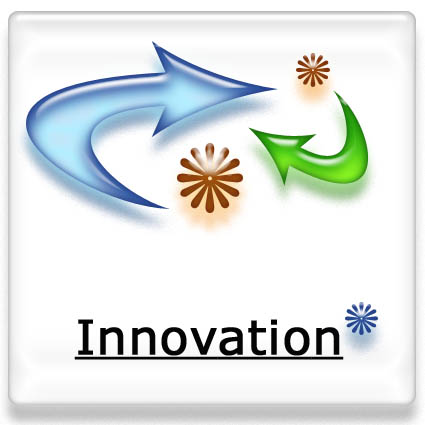
How ready is the culture for innovation?
How adept your workforce is with a dynamic knowledge system or how porous they are with circumstance fluctuation are simple questions which help you to approximately understand how innovative your organization is. However, to ensure that your organization is ready for such innovation trials you need to first make sure that your organization is innovation-ready.
At The DeSai Group, our innovation consulting processes are deliberate and drastic. They are designed to be transformative in nature. We believe in a sustained innovation strategy instead of piecemeal innovation. This means that our consulting techniques rely heavily on a dramatic change to completely undermine forces of resistance and new growth opportunities. As necessity is the mother of invention, we facilitate an environment in your organization where necessity is induced to alter psychological performance and create a climate of innovation. The process makes your workforce rehearse find measures of self-innovation. This means there are real entrepreneurs working on their passions in an environment that promotes experimentation, risk-taking, and future thinking.
The right brand image within insiders of an organization is a necessary precondition for any kind of innovation. If a nagging employee has a negative attitude toward the organization’s optimism the result is not only affecting the performance of the concerned individual but the overall environment as well. Such individuals can be motivated through vigorous team-building and venturing skills.
The process of innovation is largely a psycho-social process wherein knowledge transfer and experiential methods are largely employed to achieve the goal. We, here at The DeSai Group, clinically approach the intangibility quotient of innovation through hard-core rational, analytical science we call “Innovation Execution Methodology”, while keeping in mind that innovation is also very much a form of art and it is the artistic and unpredictability that actually gives rise to new ideas for commercialization and value generation.
What Will Happen in 2011?
Wow, another new year! Where does the time go?
We have seen another turbulent year filled with uncertainty, threats, and opportunities.
So, here is our attempt at sharing our favorite 20 Global Insights for 2011 and beyond.
What is inside this free report? Read on....
Did you know you have a Social Signature on the internet? What is Group Buying? Is this going to be the year for PC Tablets? What about Facebook? What should you plan for? How will Social Media impact your business? Home Banking and Home Medicine? Digital-only classes? And have you heard of Surprise Marketing? plus much more...
Here is a free report to download to find trends and innovations in technology, consumerism, society, and products. Enjoy. http://bit.ly/gI0Vmb
Nine Excellent Ways To Stifle Innovation
Innovation doesn't just happen…it comes from awesome intrapreneurial teams. Are you or your company guilty of killing good ideas?
Yes, everyone at the top is interested in innovation. It has become a business mandate in many organizations. But are the leaders serious? We find that plenty of companies are not walking the talk. They want innovation, but also don’t want to recalibrate the organizational systems. These systems are where a good idea has as much opportunity to succeed as me going to the moon. Why so?
For starters, organizations do not have an internal muscle for a creative process. The creative process is not well understood and it is truly a fragile process. This situation promotes uncertainty; something most leaders do not want to spend time on. Additionally, there are very few internal experts who can support it and nurture it like there are for project management processes, customer service processes, budgeting processes, etc. This is very tough in today’s short-term focus surrounded by the fear-inducing environment of rapid technological change and dynamic markets—but this also makes innovation essential.
So what to do? First, kill the innovation killers. Here is our list of innovation killers that will need significant moderation if not surgical removal. You can discover for yourself if you have an environment that is crushing good ideas or allowing growth and change to be welcomed.
- Clear(?) and cumbersome approval processes, rules, regulations for every action at every level within the organization. Making decisions takes forever and when they are made, they take forever to implement. Too much process everywhere.
- Silos are promoted. The organization loves to allow departments and individuals to compete against one another for resources and protect their areas.
- The truth is one-sided the truth comes mostly in the form of criticism without praise. The glass is always half-empty. The focus is so much on execution, that the culture often forgets the impact on human spirit.
- Don’t trust new ideas. All ideas are evaluated with great suspicion and ‘yes, but’. When someone contributes a new idea, the first thing someone says is ‘yes but…’ followed by ‘not sure if we can do that, or we have never done that before, or management will not approve it, etc.’ Moving away from the status quo is very difficult and not often welcomed.
- Control and calibrate everything. The organization is very systematic, dashboard driven, precise, and project managed. Although all of that is very essential, the system does not allow for any quick experimentation of new ideas or technologies with spontaneity. Missing target goals is frowned upon more than the lessons gathered through failure.
- Organization is very secretive. Restructuring, product launches, competitive news, and executive changes all occur in a secretive manner. Leaders believe that “the less people know, the better they can stay focused on the day-to-day job.” The firm does not like to share bad news with employees until the last minute.
- Promote class-based relationships. There are seniors and inferiors. Seniority and tenure are heavily used to promote fear-based execution. The culture perpetuates the idea that seniors know everything and they should get the best of everything. The higher you are up in the ladder, the more you are allowed to look down at others. Unpleasant duties can be delegated to inferiors.
- The pyramid is inverted. The higher-ups know everything important about the business, and the bottom does not need to know how the business should be conducted; as long as they do what they are trained to do.
- Leadership is invisible. Leaders are not able to connect to employees. Employees do not have confidence in the leaders based on their action and those of the top management team.
Driver for Adoption of an Innovation: Technology or Market?
What is the driver for new innovations? Does technology drive new innovations or does the Market dictate need for new innovation?
In many ways we are speaking about the two sides of a coin. So the question is, what is the coin made of? (sorry to get too philosophical, but allow me to please).
Technology is something that gets created by technologists because:
1) It is Human Nature to Create and Solve - the passion and desire to solve something far greater then one’s self (Human Spirit as the driver). There are many who simply create because they want to serve. There is nothing in it for them, but to experiment and create.
2) Motivated by raw Discovery and Inquiry – just to see what can happen (Academic Personal Brand as the driver – in most cases). Of course academia is far removed in many cases so piles of patents/technologies are created without a home for applications.
3) Marketers ‘tells’ the technologist what the market demands are and they go off and innovate (Market Driven). Of course we know how often the product actually generates the indented impact – not very good (and both the marketer and the technologist gets ‘restructured’…lol).
4) As the recent new Hollywood movie “Wall Street” depicts and as the Mortgage Crises occurred here in USA, we also see Financial Performance as the driver for new innovation at the cost of societal damage (Greed as the driver)
5) I also think technologist stay busy because of fear. Either they or someone else in their organization is fearful of losing to competition, losing their job, losing their reputation or losing their personal belongings. (Fear Driven)
I believe that Market Driven has two definitions: 1) There is an unmet Market need in the current market and 2) There is a new market being developed that is un-harvested.
If we assume the Fortune 1000s or Global 2000s as the context, I think that most innovation is driven (funding) by the “Current Market Conditions” and the “Adjacent(near future) Market Conditions” of those markets.
-Jatin
Part-4: For CEOs, what are the FOUR critical innovation barriers that must be addressed?(Part 4 of 4)
In this four part series, I mentioned that every CEO and business executives who intends to lead innovation as a strategic agenda will need to address four critical barriers to innovation.
First barrier is the mindset to harvest ideas and manage those ideas as Venture Capitalists does not exist, second barrier is the inability to recognize how to align the abundance of resources available to large organizations for investment in innovation, the third barrier is to recognize the sheer size of the human capital assets that are under-utilized and disengaged from an organization’s creative capacity. The opportunity for most organizations is to dedicate talented “New Game Teams”, focused on harvesting the creative ideas and leadership competencies, to build new top-line growth capacity.
The fourth and final barrier relates to the broad product and delivery capabilities that large-scale organizations possess.
For example, since the mid-1980’s in the financial services industry, the typical company has gone from handful of delivery channels (Branches, Relationship Managers) to literally 15-20 channels (Branches, Direct Mail, Internet, National Sales Force, Business ATMs, Corporate Cards, Affinity Marketing, Wireless, etc.); all the while expanding its product offerings by ten-fold. “Anytime, Anywhere” banking has become the price of entry across the industry as providers strive to meet the need of large and diverse customer bases.
This has created a huge challenge, since those dedicated assets to serve the wide variety of customers are not fully leveraged for new innovation. The complexity of providing the right product to the right customer through the right delivery channel in real-time – in a way that doesn’t destroy the economics of the company – becomes a monumental challenge with each new innovation. Add to this, the overwhelming issue of tying the employment brand to the product brand in the marketplace and the various components of talent acquisition.
The bottom line: the accomplishment of end-to-end alignment between products, channels, and talent acquisition (employment offers) is the single largest challenge facing large companies today. The best organizations that can create smaller more nimble organizations while retaining to leverage strength of larger institution will be in the best position to out-compete in the future, enter emerging markets quickly, and adjust to external fast-pace factors.
For complete details, please download full 23 page whitepaper on “Mastering Innovation – Roadmap to Sustainable Value Creation by Mr. Jatin DeSai”
Part-3: For CEOs, what are the FOUR critical innovation barriers that must be addressed?(Part 3 of 4)
In my last post, I mentioned that every CEO and business executives who intends to lead innovation as a strategic agenda will need to address four critical barriers to innovation.
First barrier is the mindset to harvest ideas and manage those ideas as Venture Capitalists does not exist. This requires demonstrated confidence to consciously fail, experiment often, and win occasionally. Goal is to do more of it, so you can out-compete the markets.
Second barrier I mentioned in the previous post was the inability to recognize how to align the abundance of resources available to large organizations for investment in innovation. Smaller and less nimble competition cannot, physically, out-compete you if you can leverage the resources you have. This is the primary reason for new entrants who win big against existing mature businesses; example: Facebook, Google, Amazon, Skype, etc.
The third barrier is to recognize the sheer size of the human capital assets that are under-utilized and disengaged from an organization’s creative capacity. The opportunity for most organizations is to dedicate talented “New Game Teams”, focused on harvesting the creative ideas and leadership competencies, to build new top-line growth capacity. Proctor and Gamble’s global research and development organization back in 2008, employed over 7,500 scientists; GE used to train 10,000 managers every year and performed over 5,000 detail performance reviews of its senior-most employees; and Cisco increased its engineering workforce by 300% since 2000 to 2008.
The bottom line: developing a holistic and integrated human capital strategy for innovation is critical so it promotes “value creators” and rewards them to continue to create value while staying in workable compensation systems. Remember, innovation comes from ideas, ideas come from engaged employees, partners, and suppliers.
For complete details, please download full 23 page whitepaper on “Mastering Innovation – Roadmap to Sustainable Value Creation by Mr. Jatin DeSai”


